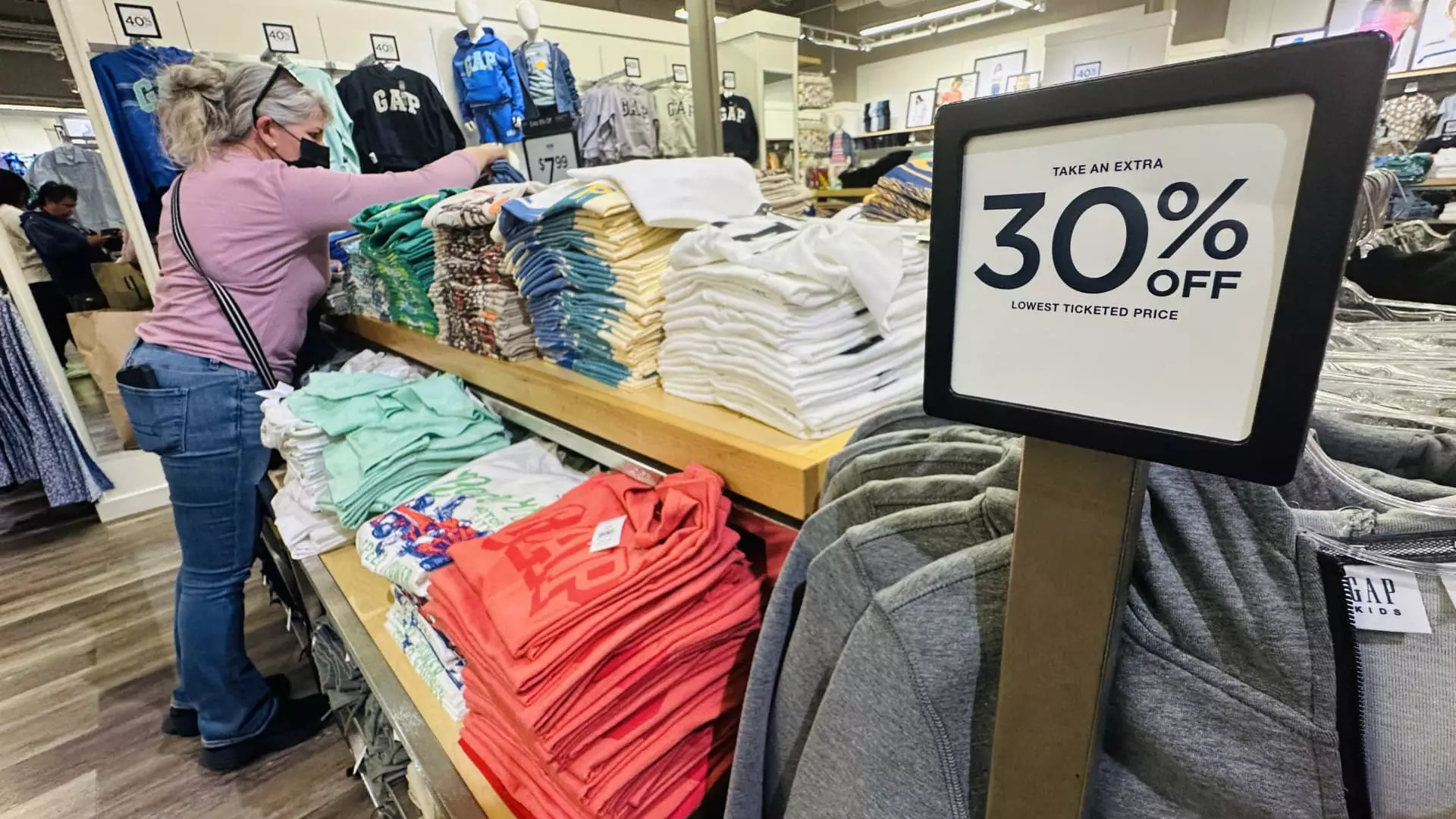As the landscape of American consumerism evolves, few sectors are facing as imminent a threat as the apparel industry. The recent imposition of new tariffs on imported goods has substantial implications, particularly for clothing, with forecasts indicating a staggering 64% price increase in the short run. This inflationary pressure won’t relent; experts project that apparel prices will stabilize 27% higher in the long-run. For a country where nearly all clothing and footwear originates from abroad, primarily China and Vietnam, these figures create a chilling scenario for average Americans who are already grappling with rising living costs.
The Reality of an Unsustainable Policy
The Trump Administration has opted for a blunt approach towards China, employing a universal tariff rate of 10% on various consumer goods. This clearly points to a trade war that lacks finesse and is deeply unsustainable. Julia Hughes, president of the United States Fashion Industry Association, articulated the widespread concern—escalating the trade war benefits no one. Steve Lamar, the president and CEO of the American Apparel & Footwear Association, echoed similar sentiments, emphasizing that the latest tariffs impose an unsustainable tax on U.S. imports, ultimately cranking up prices for consumers. This is not merely a policy of trade; it’s a tax that impacts whether families can afford to clothe themselves adequately.
The Shift in Consumer Behavior
With such steep price hikes looming on the horizon, consumers are compelled to adapt. A recent study revealed that three-quarters of Americans are already engaging in “trade-down” shopping behavior—turning to secondhand and lower-priced options as the economic forces tighten their grip. As inflation chips away at our purchasing power, families are making choices that cut into their wardrobes, opting instead for thrift-store treasures or even cheaper ‘dupe’ products. This shift constitutes a significant cultural change that underscores a broader trend; luxury brands are losing their allure, not through market volition, but through socio-economic necessity.
Counterfeit Catastrophe?
Ironically, the tariffs might create fertile ground for counterfeiters. The constraints on legitimate imports drive consumers towards much cheaper—but often lower-quality—goods that do not stand up to scrutiny. Vidyuth Srinivasan, the CEO of an authentication service, highlights an alarming trend: as tariffs restrict legitimate pathways for goods, counterfeiters will find new routes to flood the market. While consumers desperately seek affordable alternatives, they may inadvertently open channels for lower-quality products that serve only to exacerbate the very issues they set out to resolve.
Rise of the Resale Market
In light of these obstacles, a silver lining may materialize in the booming resale market. Projections for this sector suggest remarkable growth—by 2029, it’s estimated that the resale market will reach a staggering $291.6 billion. This growth is driven, in part, by a generational shift towards secondhand shopping, primarily among the younger demographic that prioritizes sustainability and affordability. The expanding acceptance of online resale platforms catalyzes this trend, offering savvy consumers a path to procuring luxury goods without the burdensome premiums imposed by tariffs.
The Evolving Landscape of American Fashion
Unquestionably, the repercussions of these tariffs extend beyond just the economic realm; they ensnare the very identity of American fashion. With back-to-school shopping just around the corner, the industry holds its breath, caught in a tug-of-war between policy impacts and consumer trends. Importantly, while the demand for secondhand products surges, the existing market struggles to provide enough inventory to meet consumer expectations, a fact that the industry must urgently address.
Notably, amidst this chaotic environment, many industry leaders assert that swift and adaptive strategies may be the only way out. In a time where adaptability defines success, how brands react to the changing landscape will set the tone, whether through embracing resale or reimagining supply chains to mitigate the blow of tariffs.
A Cautionary Tale for Future Trade Policies
Ultimately, the escalating trade war serves as a cautionary tale about the pitfalls of unilateral tariffs, especially in a globalized economy. As consumers reel from the impending price hikes and seek alternative shopping methods, the implications for domestic brands and retail overall could be catastrophic. A balance must be struck; while trade policies are crucial in negotiating the complexities of foreign relations, they must also consider the tangible impact on American lives. Without a measured approach, we may find ourselves in a perpetual cycle of inflation and socioeconomic strain, forcing the average American to bear the burden of decisions made in the echelons of power.

